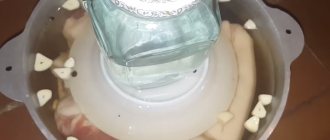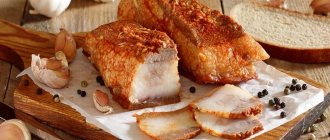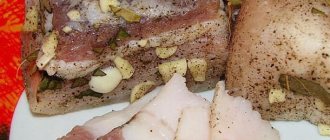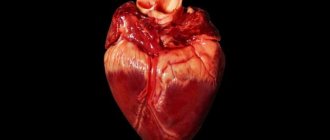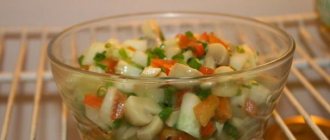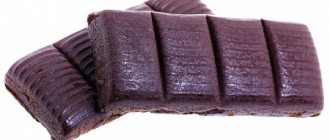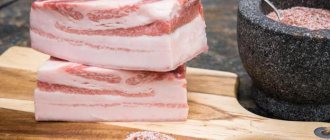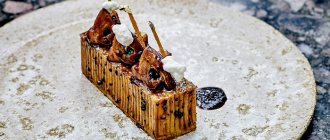With the onset of cold weather, doctors reminded people of the existence of effective and inexpensive means to protect the body from infections.
The most important vitamins for strengthening the immune system are vitamins C and B12, found in citrus fruits.
The human body also needs selenium and manganese. Selenium can be found in oatmeal and buckwheat, and manganese is found in nuts. Doctors advise introducing iron into the diet, which meat is rich in.
Don't forget about lard. Doctors recommend grinding lard with ginger, cinnamon and cloves. For a healing effect, you should consume about 4 teaspoons of lard.
Fat makes you fat
They get better not from fat, but from its quantity! You can gain weight from the healthiest oatmeal if you eat it in bags. If you lead a normally sedentary or so lifestyle, you should have 10-30 grams of lard per day. If you are already obese and are prescribed a low-calorie diet - no more than 10 g per day.
Distinguish “true” lard - subcutaneous fat, directly with the skin - from similar products. Bacon, neck, etc. - not subcutaneous, but intramuscular fat. Moreover, together with protein, that is, meat, such a mixture is no longer so good. The healthiest lard is simply salted, with garlic or pepper. It’s good and smoked, but only “at home”, with smoke. At meat processing plants, lard, brisket and other pork delicacies are smoked in liquid, and this is not comme il faut; the properties of the product do not change for the better.
Salo is a heavy food
Not certainly in that way. In a healthy person with a normal stomach, real lard is absorbed very well and does not overload the liver. In general, the most valuable fats for us are those that melt at our body temperature, i.e. about 37.0. They are digested and absorbed more completely and faster than all others. Their list is headed by lard.
But, of course, lard, like any fat, requires bile and lipases (special substances in the stomach and intestines) for its digestion. Therefore, if there are disturbances in the production of bile and saponification of fats, doctors do not recommend eating it.
Excessive sweating
We cannot exclude such a cause of craving for salty foods as increased sweating. Along with it, sodium and chlorine leave the body, and you become very thirsty. The causes of sweating can be varied:
- staying in hot countries where humidity levels are high;
- active physical activity;
- heavy physical labor in a hot shop or other similar conditions.
To avoid a lack of sodium in the body, it needs to be replenished, but it is important not to overuse salty foods to avoid changes in blood pressure and disturbances in the production of gastric juice. It is better to compensate for the lack of sodium with mineral water and certain vegetables.
Lard is all fat
And great! Because this is an excellent structure - subcutaneous fat, in which cells and biologically active substances are preserved.
For example, the most valuable of fatty acids is polyunsaturated arachidonic acid. It is found very rarely; it is not found in vegetable oils at all. There is no way to live without her. Arachidonic acid is part of all cell membranes and is needed by the heart muscle. In addition, hormones, immune reactions and cholesterol metabolism cannot function without it.
There are also other essential fatty acids (they are called vitamin F) - linoleic, linolenic, palmitic, oleic. In terms of their content, by the way, lard is close to vegetable oils. Don't forget about fat-soluble vitamins A (up to 1.5 mg per 100 g), D, E, as well as carotene. As a result, the biological activity of lard is 5 times higher than that of oil. So in winter, “pork product” is just what you need to maintain vitality and immunity.
That terrible cholesterol
Yes, it is present here, but even less than in cow butter. And there is nothing wrong with it. Do you think it will immediately begin to be deposited on the walls of the arteries and atherosclerosis will begin? Nothing like this! Doctors have long established that the amount of cholesterol in the blood and tissues depends little on how much you eat. This substance is perfectly synthesized even if you don’t eat it at all. Therefore, cholesterol metabolism is much more important: what the body receives, how much it makes and how it uses it.
By the way, arachidonic, linoleic and linoleic fatty acids “clean” blood vessels from deposits. So a small piece of lard with vitamin F is only beneficial in preventing atherosclerosis. And the cholesterol present in it will be used, for example, to create immune cells (lymphocytes and macrophages) that save the body from viruses and other pathogenic enemies. Even intelligence is nowhere without cholesterol - there is more than 2% of it in the brain.
Cravings for salty foods in pregnant women
Now let's look at another common reason why women crave salty foods during pregnancy? During this period, such a phenomenon is considered the norm and occurs quite often. The situation is explained by the fact that expectant mothers undergo some changes and rearrangements in their bodies, as a result of which microelements and other substances are spent on the formation of organs and tissues of the unborn baby.
When a pregnant woman has a craving for salty foods, it’s all about the water-salt balance. Blood volume almost doubles during pregnancy, and at the same time the water level rises. Sodium, that is, salt, is needed to maintain fluid balance, and when it is lacking, a woman craves a pickled cucumber or some kind of herring, regardless of how much fluid you can drink during pregnancy.
With bread? In no case!
Paradox: lard with bread is just what the doctor ordered! An amazing natural combination in which both products are perfectly absorbed. Of course, we do not mean donut buns, but grain bread, made from wholemeal flour or with the addition of bran. Of course, this is for healthy people who are not obese or have digestive problems.
When losing weight, don’t forget about lard: it is an excellent source of energy. A dietary option is to eat lard with vegetables, for example, cabbage. You can have a bite, or you can make a hodgepodge with it, just don’t overcook it.
But it’s really not worth putting gastronomic joys like bacon on bread. In general, when losing weight, they are allowed in microscopic quantities - about 5 g. But this is quite enough to add flavor, for example, to the usual stewed cabbage, carrots or beets.
Harm of lard
In addition to its benefits, lard can cause harm to the body. Excessive consumption can lead to atherosclerosis and obesity. Those who have problems with blood vessels and digestion are not recommended to eat lard.
Lard should not be fried too much to avoid carcinogens. The choice of lard should be taken carefully; the most important thing is that the animal is raised in an ecologically clean area.
Smoked lard can cause a lot of harm, as it contains many carcinogens. This concerns not only the natural method of smoking, but even the use of liquid smoke.

You should also know that frequent overeating of lard can lead to serious problems. If you have any chronic diseases, it is better to consult a doctor before using the product.
Better with vodka
This is the honest truth - lard is a wonderful companion to alcohol. Mainly because it doesn't allow you to get drunk quickly. Fatty lard envelops the stomach and does not allow the high-grade drink to be immediately absorbed there. Of course, alcohol will still be absorbed, but later, in the intestines, and gradually.
Alcohol, for its part, helps to quickly digest fat and break it down into components. By the way, it is absolutely not necessary to use lard with vodka, that is, with vodka! It tastes much better with a glass of dry red wine.
Salted pork lard
“The more natural the fat, the better!” Salted lard perfectly meets this requirement of modern dietetics. If the lard is soft, oily, and spreads out, it means that the pig was overfed with corn. If the lard is hard, it means the pig has been hungry for a long time. And the most delicious and dense lard is obtained if the animal ate “pig-like” - acorns.
The healthiest lard is 2.5 cm under the skin.
A piece of lard is a great “snack” during working hours. It is well absorbed, does not overload the liver and provides as much as 9 kcal of energy per 1 g of product. This is much healthier than even the most expensive sausage, bun or pies.
Currently, there are even diets based on moderate consumption of lard. They say that if you eat a couple of pieces of lard on an empty stomach, you can quickly achieve a feeling of fullness. This will prevent you from overeating and you will be able to maintain a good figure.
However, remember that lard, like all fatty foods, should be consumed in small quantities, preferably with warm or easily digestible food. The recommended amount is no more than 100-150 g of lard per week. And with a sedentary lifestyle, after 50 years, as well as with hypercholesterolemia and atherosclerosis, its use should be sharply reduced.
Cells and biologically active substances are preserved in the subcutaneous fat of pigs, which determines its usefulness. It contains a lot of vitamins A, D, E and carotene. Pork lard contains such an important substance as arachidonic acid, which is a polyunsaturated fatty acid. This substance is found in heart tissue, brain, kidneys, it is necessary to improve their functioning. Pork lard has anti-cancer properties, removes toxins from the body, and cleanses blood vessels of “bad” cholesterol (especially together with garlic).
Other beneficial properties of lard: helps with pulmonary diseases; treats the liver; removes heavy metals from the body; helminth parasites do not live in it. The beneficial properties of lard are best demonstrated if consumed in moderation (no more than 100 g per day). As for the danger of obesity, in America, where they don’t eat real lard, there are many times more obese people than in Ukraine, where they eat lard every day.
Salo is power!
04/03/2019 No one needs to be convinced that lard occupies a special place of honor in the recipe of Ukrainian national cuisine. Moreover, the love for this product has long gone beyond the borders of our country, and even in countries such as Israel, Canada or Argentina, you can easily find a restaurant where you will be served Ukrainian borscht seasoned with garlic, pieces of lard and pampushki with a steamy bottle of vodka.
Today, lard with juicy green onion feathers and pieces of black rye bread laid out on a multi-colored tablecloth embroidered with a cross is the main symbol of our national cuisine, and this simple product can easily give odds to any overseas delicacy.
Such a reverent attitude of Ukrainians towards the national product evokes admiration and envy among foreigners, because lard can be consumed in any form: salted (as an independent dish), as well as boiled, baked, fried or smoked.

However, this product is present in almost every culture, for example, there is Polish and Balkan corned beef, American bacon, German lard and so on.
Of course, it’s both satisfying and tasty, since even a couple of small pieces of frozen streaky lard on a slice of fresh bread can satisfy the feeling of hunger for a long time.
Currently, there are many diets for weight loss, the basis of which is, including moderate consumption of this product. As popular wisdom says: “It’s not the fat that makes you fat, but the quantity of it.”
It should be remembered that this product is quite high in calories (100 grams of lard contains from 720 to 902 kilocalories). Moreover, it is 100% natural food, is not radioactive and does not contain carcinogens.
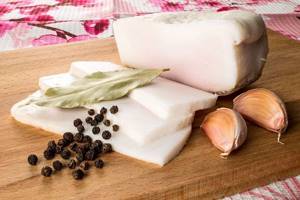
Useful properties of lard
Functionally, lard can be considered a nutritious fat reserve. It consists mainly of triglycerides or esterification products of carboxylic acids and the trihydric alcohol glycerol, and includes a large number of saturated fatty acid residues.
Lard is an excellent antioxidant because it contains selenium, which is easily absorbed by the human body. It is also rich in fat-soluble vitamins A, E and D and contains valuable arachidonic acid, which is an Omega-6 unsaturated fatty acid.
This acid is considered the most important for human health, as it helps to respond in a timely manner to attacks by viruses and bacteria, thus strengthening the body’s protective functions. For this reason, it is recommended to include lard in the winter and spring diet, that is, when there is a clear lack of vitamins.
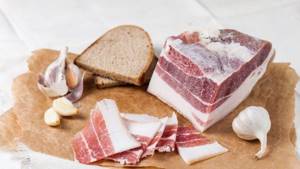
In addition, arachidonic acid is part of cell membranes and is part of cardiac muscle enzymes. That is why nutritionists recommend including lard in the daily diet (about 20-30 grams), especially for people suffering from cardiovascular diseases.
In addition to arachidonic acid, lard also contains a large number of other fatty acids that are beneficial to the human body, which play a vital role in cholesterol metabolism, participate in the construction of cells and help remove toxic substances, in particular heavy metals.
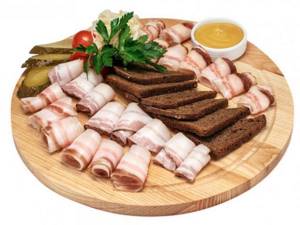
It is also recommended to consume lard when drinking alcohol, as it helps avoid severe hangover syndrome. The fact is that thanks to this product, the stomach is covered with a powerful layer of fat, preventing alcohol from being quickly absorbed and entering the blood, and therefore alcohol is absorbed by the body gradually, already in the intestines.
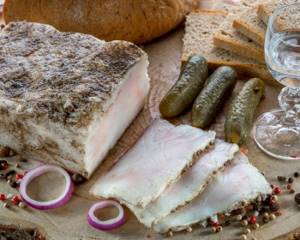
Alcohol helps the body digest fats, breaking them down into individual components, but still, alcohol should not be abused and should preferably be taken in moderation.
Scientists have proven that lard helps cleanse the blood and blood vessels, has anti-inflammatory and antitumor characteristics, and also has the ability to dissolve carcinogens, which is why it is used, among other things, for the prevention of cancer. In addition, it is useful to use for lung disease, as well as as a prophylactic agent for strengthening blood vessels, healing the liver and heart.
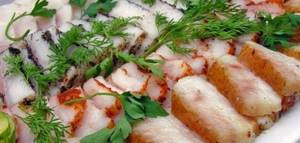
On top of that, lard has a strong choleretic effect.
Since ancient times, it has been used to treat frostbite, thermal burns, as well as arthritis, arthrosis and skin diseases. Lard is also used in toxicology as a means of protection against radiation.
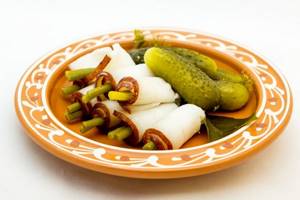
Myths about lard
Not long ago, scientists made an astonishing discovery: it turned out that lard is much healthier in its composition than olive oil, widely advertised in the media!
Let's debunk a few more existing myths about this product:
Lard is pure fat
Yes, this is true, but pork fat is a 100% natural product, therefore it is completely absorbed by the human body and is actively converted into energy. At the same time, even when consuming this product, as well as any other food, you must adhere to a reasonable standard.
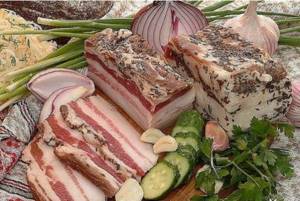
Lard is pure cholesterol
In fact, lard does not contain such a large amount of cholesterol (in veal, for example, its level is much higher). For example, beef liver contains up to 400 milligrams of cholesterol, while lard contains only about 100 milligrams of this substance. At the same time, many people forget that the harm of cholesterol has not yet been proven, but it is known that it is involved in the formation of blood cells and is part of cell membranes.
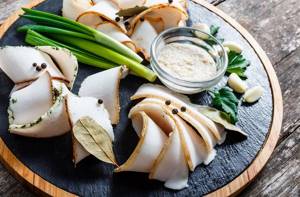
· Fat contributes to excess weight gain
It is a myth. And although this product is really high in calories, it is nevertheless impossible to eat very much of it, since the feeling of fullness comes very quickly and is felt for a long time.
That is why moderate consumption of lard prevents a person from overeating (nutritionists recommend consuming no more than 80 grams of lard per day).

Lard and bread are incompatible products
It's a delusion. In fact, a piece of lard with a slice of aromatic rye bread is an excellent way to satisfy your hunger. Especially if you season such a sandwich with garlic, which, by the way, like lard, contains a large amount of healthy selenium.
· Food should not be fried in lard
It is not true. Scientists have long proven that when vegetable oil (of any kind) is heated, carcinogens that are dangerous to the body are formed and can cause cancer. When rendering fat from lard, they are absent.
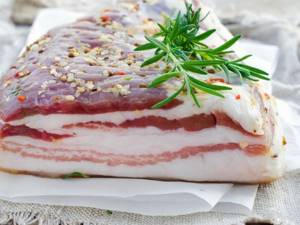
Interesting facts about lard
Translated from Old Church Slavonic the word “ sadlo”
", means "impaled on meat." Gradually, the sound “D” fell out of use over time, and only the word remained, currently pronounced as “fat.”
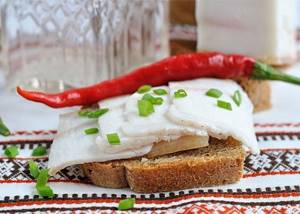
It is believed that lard was originally the main food product of the poor people. The rich considered its use beneath their dignity. In ancient times, bones and especially meat were at a premium, so people with low incomes had no choice but to purchase this product, which was the main source of fat that helped them survive hunger.
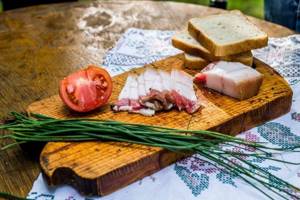
Lard was mainly consumed in the form of lard (melted fat), and candles were also made from it.
Lardo di Colonnata” has survived to this day.
" In ancient Rome, the lard for preparing this dish was matured for six months (from the beginning of autumn until the onset of spring) in special marble troughs, thanks to which the product was provided with the necessary temperature conditions and the desired level of humidity. During this process, the lard was generously seasoned with spices and flavorings.
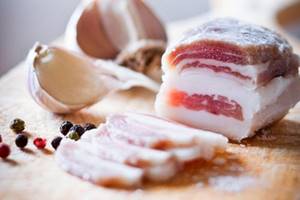
With the rise in living standards, lard gradually became a delicacy and its price is currently quite high.
The most useful lard is considered to be about 2.5 centimeters thick, which is located immediately under the skin.
Northern peoples consume seal lard, which tastes a little like pork.
